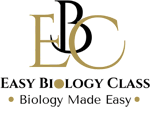(1). During glycogen metabolism, the glycogen in the cell is first breakdown to glucose-1-phosphate by the enzyme glycogen phosphorylase. This reaction is a______
a. Glycolysis reaction
b. Hydrolysis reaction
c. Phosphorolysis reaction
d. Glucolysis reaction
Learn more: MCQ on Carbohydrates (3 sets)
(2). Which of the following genes is activated as ‘oncogenes’ in some human tumors?
a. K-ras
b. BRCA1
c. RB-1
d. APC
(3). If the frequency of males affected with an X- linked recessive condition in a human population is 0.10 (one in ten) what will be the expected frequency of affected females?
a. 0.0001
b. 0.001
c. O.02
d. 0.01
(4). What are the assumptions of Hardy-Weinberg equilibrium?
a. Small population size, random mating no selection, no migration, no mutation
b. Large population size, random mating, no selection, no migration, no mutation
c. Large population size, random mating, heterozygotes survive the best, no migration, no mutation
d. Large population size, random mating, no selection, migrants enter form other populations, no mutation
Learn more: Hardy-Weinberg Equilibrium and Population Genetics (Notes)
(5). The receptor for which of the following hormone is a transcription factor?
a. Insulin
b. Glucagon
c. Estrogen
d. Adrenalin
(6). Human chorionic gonadotropin responsible for maintenance of pregnancy in women originates from:
a. Ovary
b. Pituitary
c. Uterus
d. Placental trophoblast
(7). The primary target organ of aldosterone action is:
a. Liver
b. Pancreas
c. Kidney
d. Heart
(8). Thyroxin is important in the control of:
a. Cellular metabolic rates
b. Diabetes mellitus
c. Mitochondrial respiration
d. Calcium uptake
(9). Immunoglobulin G was fractionated by size exclusion chromatography and it was observed to have a molecular mass of 150 kDa. SDS-PAGE analysis under reducing conditions revealed two bands of size 50 kDa and 25 kDa. The oligomeric status of the protein consists of:
a. 3 polypeptide chain of molecular mass 50 kDa
b. 6 polypeptide chains of molecular mass 25 kDa
c. One polypeptide chain of 50 kDa and 4 polypeptides of mass 24 kDa
d. Two polypeptides of 50 kDa and two of 25 kDa
Learn more: Immunology MCQs + Answer Key
(10). The following two organs are examples of secondary lymphoid organs:
a. Spleen and Thymus
b. Lymph nodes and Spleen
c. Spleen and Thyroid
d. Bone marrow and MALT
(11). Class switching takes place in:
a. Pro-B cell
b. Pre-B cell
c. Immature B cell
d. Activated B cell
(12). Gell and Coombs classified hypersensitivity into four types. IgE-mediated hypersensitivity belongs to:
a. Type I
b. Type II
c. Type III
d. Type IV
(13). 1 µ mole of a high affinity monoclonal IgG was reacted with 100µ moles of its antigen. The amount of antigen found in antigen-antibody complex is:
a. 1 µ mole
b. 2 µ mole
c. 4 µ mole
d. 10 µ mole
(14). The antigen processing cell in higher organism is
a. T cell
b. Macrophage
c. Megakaryocyte
d. Eosinophil
(15). In a reaction containing dNTPs and DNA polymerase in buffer, on which of the following molecules DNA synthesis would occur
a. A single stranded closed circular DNA
b. A double stranded closed circular DNA
c. A single stranded closed circular DNA paired with a short oligonucleotide with a 3’ terminal phosphate
d. A single stranded closed circular DNA paired with a short oligonucleotide with a 3’ hydroxyl group
Learn more: Nucleotide Biosynthesis
(16). Comparative genomic hybridization is a technique to look for certain types of genetic changes in cancer cells by comparing the DNA from the cancer cells with that of corresponding normal cells. Which types of genetic changes are detected here?
a. Base mismatch
b. Gene deletion and amplification
c. Loss of single base
d. Promoter methylation
(17). Which of the following techniques can be used to accurately measure the molecular weight of protein
a. NMR
b. Size exclusion chromatography
c. Mass spectrometry
d. Analytical Ultra Centrifugation
(18). The Ames test is a mass screening approach used for the detection of:
a. Toxins
b. Mutagenic carcinogens
c. Lactose intolerance
d. Phenyketonuria
(19). The following virus depends on reverse transcriptase for its genome replication
a. Rotavirus
b. Influenza A virus
c. Hepatitis A virus
d. Hepatitis B virus
(20). N-acetylmuramic acid differs from N-acetylglucosamine by having 0’lactyl group at:
a. Carbon one
b. Carbon two
c. Carbon three
d. Carbon four
CSIR JRF NET June 2017 Model Question Papers
| Part- 1/4 | 2/4 | 3/4 | 4/4 |
Answer Key with Explanations
1. Ans. (c). Phosphorolysis reaction
Phosphorolysis: a type of breakdown reaction which breakdown larger molecules into smaller molecules. Unlike hydrolysis the phosphorolysis reaction does not use water for the breaking of bonds but it uses phosphate for the purpose.
2. Ans. (a). K-ras
3. Ans. (d). 0.01
4. Ans. (b). Large population size, random mating, No selection, no migration and no mutation
Learn more: Hardy Weinberg Equilibrium
5. Ans. (c). Estrogen
6. Ans. (d). Placental trophoblast
7. Ans. (c). Kidney
8. Ans. (a). Cellular metabolic rates
9. Ans. (d). Two polypeptides of 50 kDa and two of 25 kDa
10. Ans. (b). Lymph nodes and Spleen
11. Ans. (d). Activated B cells
12. Ans. (a). Type I
13. Ans. (a). 1 µ mole
14. Ans. (a). T cell
15. Ans. (d). A single stranded closed circular DNA paired with a short oligonucleotide with a 3’ hydroxyl group
16. Ans. (b). Gene deletion and amplification
17. Ans. (c). Mass spectrometry
18. Ans. (b). Mutagenic carcinogens
19. Ans. (d). Hepatitis B virus
20. Ans. (c). Carbon three
| You may also like NOTES in... | ||
|---|---|---|
| BOTANY | BIOCHEMISTRY | MOL. BIOLOGY |
| ZOOLOGY | MICROBIOLOGY | BIOSTATISTICS |
| ECOLOGY | IMMUNOLOGY | BIOTECHNOLOGY |
| GENETICS | EMBRYOLOGY | PHYSIOLOGY |
| EVOLUTION | BIOPHYSICS | BIOINFORMATICS |

it would help if the answers were a little more elaborated.